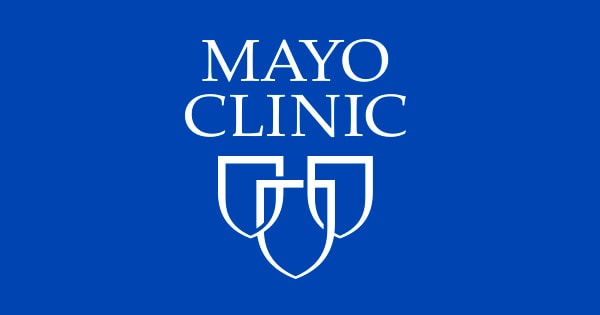— Patients with so-called morning chronotype used devices a half-hour more per night
by Elizabeth ShortStaff Writer, MedPage Today April 1, 2023
Obstructive sleep apnea (OSA) patients with a morning chronotype — early birds — tended to use their continuous positive airway pressure (CPAP) devices for a longer duration of time per night, according to a secondary analysis of the randomized APPLES trial.
In a fully adjusted model, patients with the morning chronotype used their CPAP machines for 32 more minutes per night compared with their intermediate chronotype counterparts over 6 months of use (95% CI 6.3-57.5, P=0.017), reported Melissa Knauert, MD, PhD, of Yale University School of Medicine in New Haven, Connecticut, and colleagues in Annals of the American Thoracic Society.
“Understanding that chronotype can influence adherence to CPAP is another tool in the kit for sleep doctors to predict who might have trouble using CPAP and focus on patients at higher risk of not using their CPAP,” she told MedPage Today. “Ultimately, as we study and improve our understanding of the relationship between chronotype and CPAP use, we can develop specific therapies targeted at patients with non-morning chronotypes.”
Chronotype was defined by the Morningness-Eveningness Questionnaire (MEQ), which measures when a person’s circadian rhythm produces peak alertness.
The researchers found that patients in the morning group were least likely to report feeling unrested during the course of the day compared with the intermediate and evening groups:
- Morning (MEQ 59 or above): 17.4%
- Intermediate (MEQ 42-58): 28.3%
- Evening (MEQ 41 or lower): 41.0%
The primary analysis of APPLES (Apnea Positive Pressure Long-term Efficacy Study), first reported in 2012, showed that treating sleep apnea with CPAP devices improved subjective and objective measures of sleepiness, especially among patients with severe OSA, versus a sham device.
Sleepiness and functional status improve with each hour of CPAP use, but Knauert noted that sleep apnea is often very difficult to treat because many patients are unable to use CPAP effectively.
Even within clinical trials, only 39-42% of patients use the device for more than 4 hours a night, according to the study. Furthermore, many patients stop CPAP use altogether — in the U.S., only 40-60% of the estimated 30 million patients with OSA remain adherent long term.
“Anything and everything that we do to understand and improve CPAP use will have tremendous health benefits,” she said. “Understanding the mechanisms by which circadian biology impacts health is a large, untapped area for future research.”
Data for the analysis were taken from the 469 participants (mean age of 48-56 years) randomized to the CPAP group in the APPLES trial, which was conducted at five clinical centers in the U.S. Of those, 44% had a morning chronotype, 47% an intermediate chronotype, and 8% an evening chronotype.
Overall, 65% were men, and most had severe OSA and obesity, with an average body mass index (BMI) of 32.
Patients in the evening group were younger and less likely to be married, but no significant differences in sleep apnea characteristics were noted between groups, nor were there differences in insomnia or sleepiness. Anxiety was highest among participants with an intermediate chronotype.
On average, patients slept about 7 hours per night. On the weekends, morning chronotype patients reported slightly shorter sleep duration compared with the intermediate and evening groups (7.3 vs 7.6 and 7.9 hours per night).
The fully adjusted model for CPAP use per night included the following variables: age, sex, ethnicity, Apnea-Hypopnea index, time spent with arterial oxygen saturation below 85%, arousal threshold, marital status, education, sleep factors, insomnia, weekend catch-up sleep, depression, anxiety, BMI, fatigue, and sleepiness via the Epworth Sleepiness Score.
Study limitations, the team said, include that the secondary analysis prevented the measurement of sleep duration while the patient was in their usual sleep environment, and the original trial was not meant to analyze the link between individual chronotype and adherence to CPAP usage.
![author['full_name']](https://clf1.medpagetoday.com/media/images/author/EShort_188.jpg)
Elizabeth Short is a staff writer for MedPage Today. She often covers pulmonology and allergy & immunology. Follow
Disclosures
This study was supported by funding from the Fund to Retain Clinical Scientists at Yale, a Doris Duke Charitable Foundation award, and the Yale Center for Clinical Investigation.
Knauert reported a relationship with Serca Science; co-authors reported relationships with M^3 Public Benefit Corporation and Restful Robotics.
Primary Source
Annals of the American Thoracic Society
Source Reference: Knauert M, et al “Morning chronotype is associated with improved adherence to continuous positive airway pressure among individuals with obstructive sleep apnea” Ann Am Thorac Soc 2023; DOI: 10.1513/AnnalsATS.202210-885OC.
Note: This article have been indexed to our site. We do not claim legitimacy, ownership or copyright of any of the content above. To see the article at original source Click Here










![[사설] 71년 만의 ‘1월 추경’… 나라곳간 안중에 없는 대선후보들 thumbnail](http://img.segye.com/content/image/2022/01/21/20220121515748.jpg)


